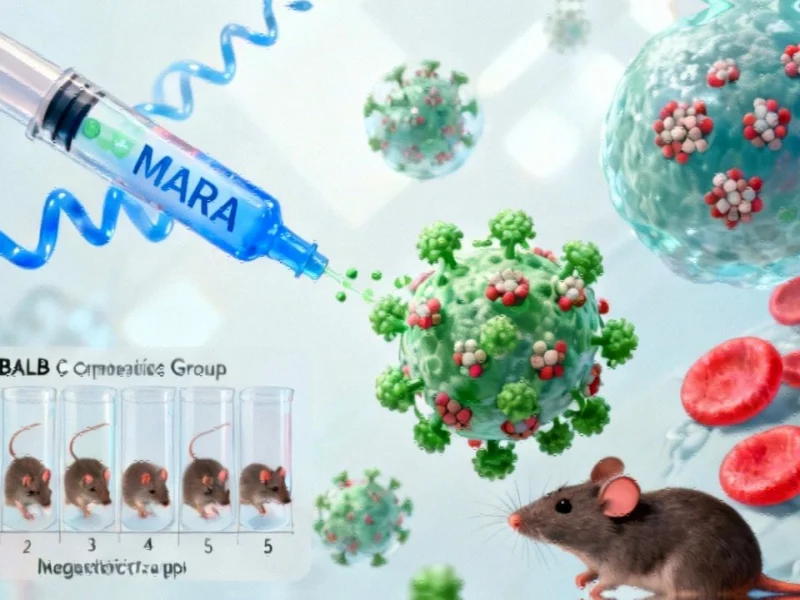Breakthrough Cancer Treatment Shows Rapid Tumor Reduction
In what oncologists are calling a potential paradigm shift in cancer care, a novel triple-action therapy has demonstrated remarkable effectiveness in shrinking head and neck cancer tumors within weeks. The treatment, amivantamab, represents not only a therapeutic advancement but also a significant evolution in how advanced cancer treatments are administered and delivered to patients.
Addressing an Unmet Medical Need
Head and neck cancer ranks as the world’s sixth most common malignancy, presenting significant treatment challenges when it recurs or metastasizes. Patients who fail to respond to standard immunotherapy and platinum chemotherapy have historically faced limited options. The recent trial results presented at the European Society for Medical Oncology conference in Berlin suggest this landscape may be changing dramatically.
Professor Kevin Harrington of the Institute of Cancer Research in London emphasized the significance: “To see this level of benefit for patients who have endured numerous treatments is incredibly encouraging. This could represent a real shift in how we treat head and neck cancer – not just in terms of effectiveness, but also in how we deliver care.”
Triple Mechanism of Action
What sets amivantamab apart is its sophisticated triple-target approach. The drug simultaneously blocks EGFR (epidermal growth factor receptor), a protein that facilitates tumor growth, and MET, a pathway cancer cells commonly exploit to evade treatment. Additionally, it activates the immune system to mount an attack against the tumor.
This multi-pronged strategy represents the cutting edge of precision medicine, where treatments are designed to address multiple resistance mechanisms simultaneously. The approach mirrors broader industry developments in complex system optimization seen across multiple technology sectors.
Impressive Clinical Results
The Orig-AMI 4 trial, involving patients from 11 countries including the UK, focused on individuals with recurrent or metastatic head and neck squamous cell carcinoma (HNSCC) – a particularly challenging form that often returns after standard therapies. Among 86 patients who had previously received immunotherapy and chemotherapy, 76% experienced tumor shrinkage or cessation of growth.
Perhaps most notably, responses were observed within six weeks on average, with patients achieving an average progression-free survival of 6.8 months. The treatment was generally well-tolerated, with most side-effects ranging from mild to moderate.
Transforming Treatment Delivery
Beyond its therapeutic benefits, amivantamab’s administration method represents a significant advancement in patient care. Unlike many cancer treatments that require lengthy intravenous infusions, this therapy is delivered via subcutaneous injection.
“Unlike many cancer treatments that require hours in a hospital chair, amivantamab is given as a simple injection under the skin,” Professor Harrington noted. “This makes it faster, more convenient, and potentially easier to deliver in outpatient clinics – or even at home in the future.”
This streamlined delivery approach reflects similar efficiencies being pursued across healthcare technology, including related innovations in medical device design and administration protocols.
Patient Experience and Quality of Life
The human impact of this treatment is perhaps best illustrated by patient experiences. Carl Walsh, a 59-year-old from Birmingham with tongue cancer, joined the trial in July after chemotherapy and immunotherapy failed.
“I’m now on my seventh cycle of treatment. It’s working well so far and I’m very happy with the progress,” Walsh reported. “Before starting the trial, I couldn’t talk properly and eating was difficult but the swelling has gone down a lot, and I’m not in the same amount of pain I used to be in. Sometimes I even forget that I have cancer.”
Broader Implications for Cancer Care
The success of amivantamab signals a broader shift toward multi-targeted therapies in oncology. As researchers better understand the complex mechanisms tumors use to survive and proliferate, treatments that address multiple pathways simultaneously are becoming increasingly important.
This approach aligns with recent technology trends across multiple industries, where sophisticated algorithms and system-level thinking are driving innovation. The convergence of biological understanding and treatment delivery optimization represents a significant step forward in cancer care.
Future Directions and Market Impact
As the pharmaceutical industry continues to invest in targeted therapies, the success of amivantamab may accelerate development of similar multi-mechanism treatments. The Janssen-funded trial results have generated considerable excitement in oncology circles, with researchers noting the potential for this approach to be adapted for other cancer types.
The treatment’s subcutaneous administration also points toward broader market trends in healthcare toward patient-centered care delivery models that prioritize convenience and quality of life alongside therapeutic efficacy.
Conclusion: A New Paradigm in Oncology
The development of amivantamab represents more than just another cancer drug—it signals a fundamental evolution in how we approach cancer treatment. By combining multiple mechanisms of action with patient-friendly administration, this therapy addresses both biological complexity and human factors in cancer care.
As research continues and this treatment moves through further clinical development, it may establish a new standard for what patients can expect from advanced cancer therapies—not just in terms of effectiveness, but in how treatment integrates with their daily lives and overall well-being.
This article aggregates information from publicly available sources. All trademarks and copyrights belong to their respective owners.
Note: Featured image is for illustrative purposes only and does not represent any specific product, service, or entity mentioned in this article.



